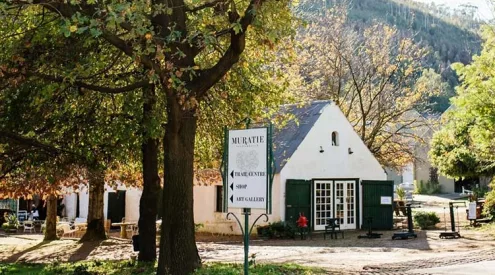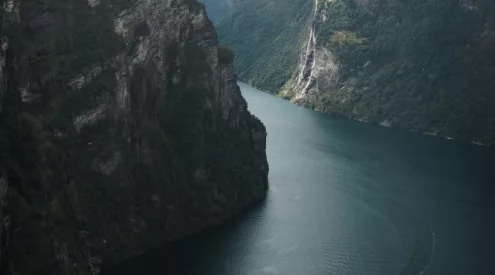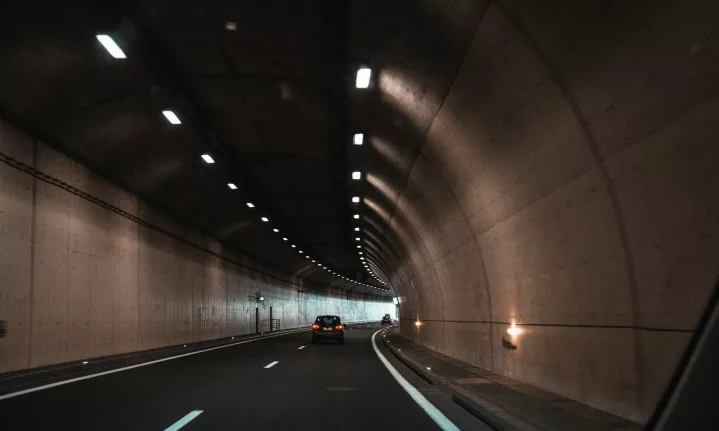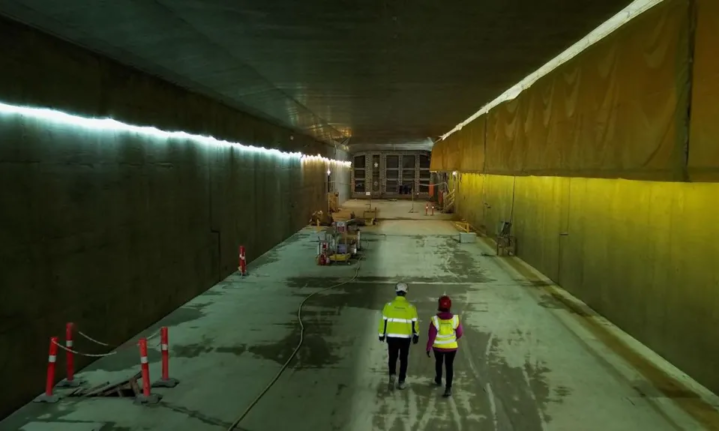A groundbreaking tunnel project beneath the Baltic Sea is set to transform travel between Denmark and Germany, dramatically reducing journey times and strengthening Scandinavia’s connection to mainland Europe.
It is believed that the Fehmarnbelt will claim the title of the world’s longest prefabricated road and rail tunnel, stretching 18 kilometres.
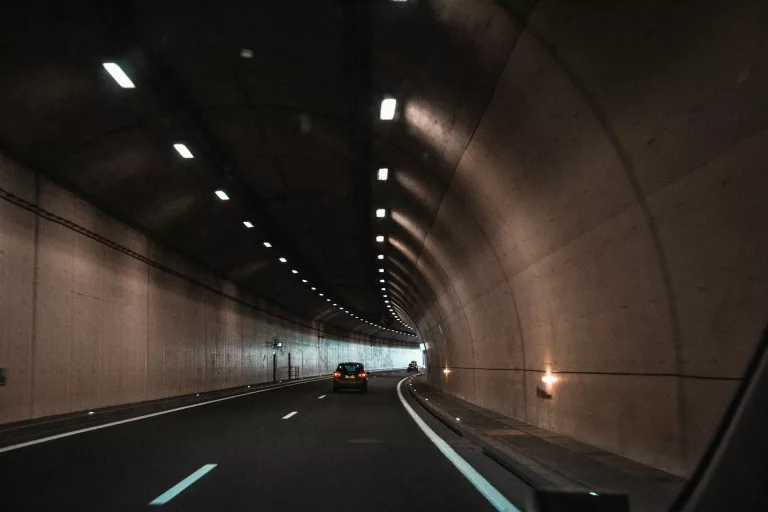
Picture/Paulina Sushko
This will also showcase impressive form engineering, which will reveal segments of the tunnel being placed on top of the seafloor and then put together.
The project’s main construction site will be at the tunnel’s northern entrance on the coast of Lolland Island, southeast of Denmark.
Henrik Vincentsen, chief executive of Femern, the state-owned Danish company building the tunnel, told BBC.com: “It’s a huge facility here.”
Each of the tunnel’s 90 segments will be constructed from reinforced steel and concrete, forming 217-meter (712-foot) long, 42-meter wide elements.
Unlike most underwater tunnels, such as the 50-kilometre Channel Tunnel between the UK and France, which are bored through bedrock, the Fehmarnbelt is being assembled section by section on the seabed, like giant Lego bricks.
“We are breaking records with this project,” says Mr Vincentsen. “Immersed tunnels have been built before, but never on this scale.”
Europe’s boldest immersed tunnel project begins to take shape
With a price tag of around €7.4 billion ($8.1 billion; £6.3 billion; R137 million), the project is primarily funded by Denmark, bolstered by €1.3 billion in support from the European Commission.
It ranks among the largest infrastructure undertakings in the region and forms part of a broader EU initiative to enhance cross-continental travel while curbing air traffic.
Once complete, the tunnel will cut the journey between Rødbyhavn in southern Denmark and Puttgarten in northern Germany to just 10 minutes by car or seven minutes by train, replacing a 45-minute ferry ride.
It will also bypass western Denmark, slashing travel time between Copenhagen and Hamburg from five hours to just 2.5, offering a faster, greener route for both freight and passengers.
It’s among the region’s largest-ever infrastructure projects, and part of a wider EU plan to strengthen travel links across the continent while reducing flying.
“It’s not only linking Denmark to Germany, it’s linking Scandinavia to central Europe,” Vincentsen added. “Everybody’s a winner,” he believes. “And by travelling 160km less, you’ll also cut carbon and reduce the impact of transport.”
ALSO READ: How to experience the Cape Winelands like a local
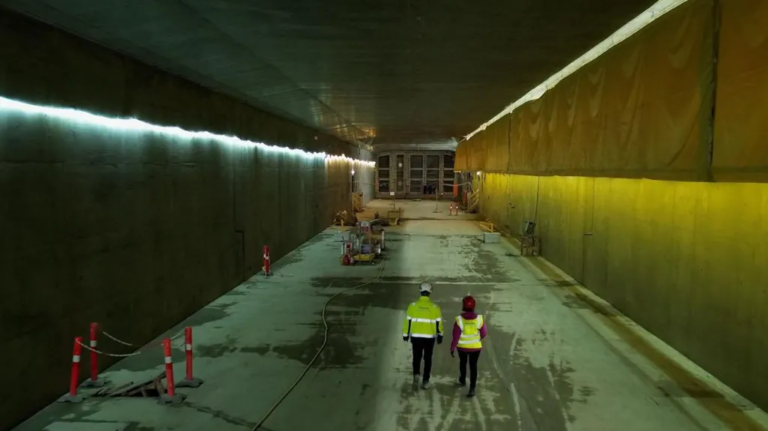
Picture/BBC.com
Precision placement: Engineering on the seafloor
Each segment is not only long, but staggeringly heavy, topping 73,000 tonnes. Yet, thanks to sealed ends and built-in ballast tanks, they become buoyant enough to be tugged across the water.
Lowering them into position is an intricate process. Using underwater cameras and GPS-guided systems, workers lower each segment 40 metres into a trench on the seabed—aligning it with astonishing 15mm precision.
“We have to be very, very careful,” Wede stressed. “We use a system called ‘pin and catch,’ where a V-shaped structure and mechanical arms guide the segment and slowly draw it into place.”
Denmark lies at the gateway to the Baltic Sea, along a stretch of busy shipping lanes. But the terrain beneath the water—layers of clay and chalk bedrock—proved too soft for traditional tunnel boring, explained Per Goltermann, a professor of concrete and structures at the Technical University of Denmark.
Initially, a bridge was on the table. However, strong winds posed a risk of traffic disruptions, and maritime safety was another major concern. “There was the risk of ships crashing into bridges,” Goltermann noted. “We can build them to withstand impact—but this is deep water, and some of the world’s largest ships sail here.”
Ultimately, an immersed tunnel was deemed both safer and more cost-effective. “They looked at it and said: What’s the cheapest? The tunnel. What’s the safest? The tunnel,” said Goltermann.
From lawsuits to green light
Though Denmark and Germany signed an agreement to build the tunnel in 2008, the project faced delays. Ferry operators opposed it, and environmental groups in Germany raised concerns about potential harm to marine life, particularly larvae and harbour porpoises, sensitive to underwater noise. One such group, Nabu (The Nature and Biodiversity Conservation Union), filed a legal challenge.
But in 2020, Germany’s federal court dismissed the case, clearing the way for construction to begin.
To limit environmental impact, several mitigation measures have been introduced. Project spokesperson Jens Ole Vincentsen points to a 300-hectare wetland and recreation area, created using dredged sand and rock, as one example of efforts to restore and enhance the local ecosystem.
When the tunnel opens in 2029, it’s expected to carry more than 100 trains and 12,000 vehicles each day. Toll revenue will repay the state-backed loans funding construction, a process estimated to take around 40 years. “Ultimately, the users are going to pay,” said Vincentsen.
The tunnel is also expected to provide a much-needed boost to the Danish island of Lolland, one of the country’s economically challenged regions.
“The locals have been waiting for this project for many years,” says Wede, who grew up in the area. “They’re excited about the opportunities it will bring—new jobs, businesses, and tourism.”
This article originally appeared on BBC.com.
Follow us on social media for more travel news, inspiration, and guides. You can also tag us to be featured.
TikTok | Instagram | Facebook | Twitter
ALSO READ: A search for the most unusual UNESCO World Heritage sites




